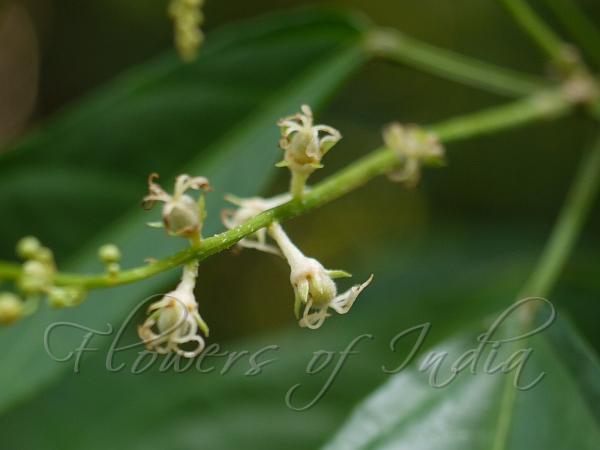|
| Malabar Croton |
|

|

| File size | 315311 |
| Original date | 12/28/14 12:24 PM |
| Resolution | 4000 x 3000 |
| Flash | Flash did not fire, auto |
| Focal length | 45.0mm |
| Exposure time | 1/60s |
| Aperture | 2.8 |
| Focus Distance | |
| Metering Mode | Spot |
| Camera make | Panasonic |
| Camera model | DMC-G1 |
| Sensor type | OneChipColorArea |
|
|
|
|
Photo: |
Botanical name: Croton chakrabartyi Family: Euphorbiaceae (Castor family)
Synonyms: Croton gibsonianus auct. plur. non Nimmo
Synonyms: Croton gibsonianus auct. plur. non Nimmo
Malabar Croton is a newly described (2021) shrub, with male and female flowers on the same plant, up to 2 m
tall, branchlets pentagonal, velvet-hairy, with translucent exudate.
The species name honors Dr. Tapas Chakrabarty a former scientist at
Botanical Survey of India. Leaves are simple, alternate, spirally
arranged, rarely nearly opposite, stipulate, stipule subulate, 2-2.5 mm
long, leaf-stalk 0.5-4.5 cm long, channeled above, blade
elliptic-oblong, 7-25 x 2-7 cm, tip tapering or with a tail, margin
sawtoothed, base wedge-shaped to rounded with two ridged stipitate
basal glands, lateral nerves 4-14 pairs, hairless on both sides.
Flowers are borne in branch-end raceme-like cymes 17-30 cm long. Male
flowers are often 1-3 per node, pedicle 3-8 mm long, velvet-hairy;
receptacle woolly; sepals 5, ovate-elliptic to oblong, 1.5-2.5 x 1-1.5
mm, pointed. Petals are 5, recurved, spoon-shaped to
inverted-lanceshaped or oblong with blunt tip, margin fringed with
hairs, woolly at the base on upper side about 1 x 0.5 mm, hairy;
stamens 9-11, filaments about 1.5 mm long, anthers oblong, about 0.5 mm
long, glands 5, oblate. Female flowers are solitary to few, at the
proximal end of the raceme; flower-stalk 2-5 mm long, hairy; sepals 5,
ovate, about 2.5 x 1 mm, petals 5, much reduced to clusters of hairs;
nectaries 5, oblate; ovary spherical, about 2 mm in diameter, densely
star-shaped hairy; styles 3, free or shortly fused at base into a
column, linear, 2.5-4.5 mm long. Capsule is greyish brown, spherical,
9-14 mm in diameter, tricoccus, without accrescent sepals, densely
star-shaped velvet-hairy. Malabar Croton is endemic to Karnataka
and Kerala.
| Identification credit: Maniruddin Dhabak, Rushanh Chaudhari, Sneha Bramhadande, Mayur Nandikar | Photographed at Agumbe Ghat, Karnataka. |
• Is this flower misidentified? If yes,